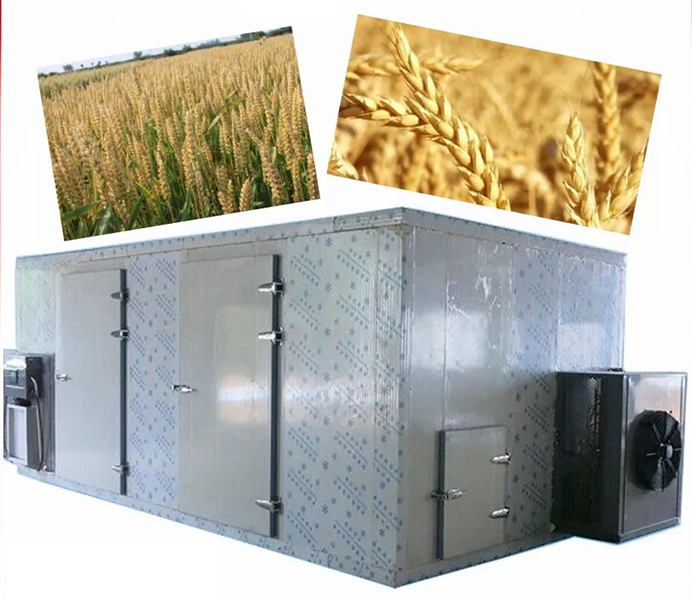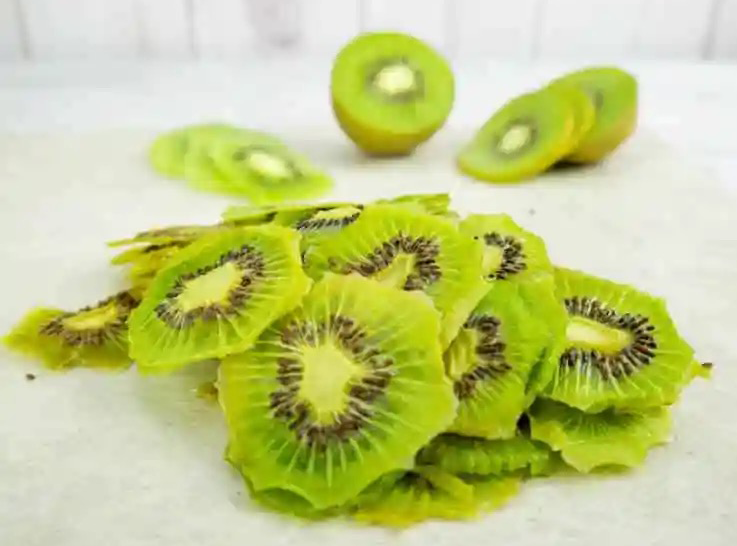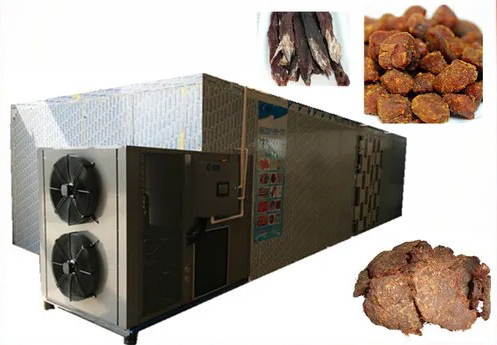
Content Menu
● Understanding Food Drying Technologies
● How Heat Pump Dryers Work
● Energy Consumption Comparison
● Advantages of Heat Pump Dryers
● Applications in Food Processing
● Cost Analysis
● Environmental Impact
● Future Trends in Food Drying Technology
● Conclusion
● FAQ
>> 1. What is a heat pump dryer?
>> 2. How much energy does a traditional dryer consume?
>> 3. What are the benefits of using a heat pump dryer?
>> 4. Can heat pump dryers be used for all types of food?
>> 5. How does the energy efficiency of heat pump dryers compare to traditional dryers?
● Citations:
In the realm of food processing, drying is a crucial method for preserving food while maintaining its nutritional value, color, and flavor. As a manufacturer of food drying machines, understanding the energy consumption of various drying technologies can help optimize production processes and reduce operational costs. This article will explore the energy efficiency of heat pump dryers compared to traditional dryers, focusing on their applications in food drying.

Understanding Food Drying Technologies
Food drying is an ancient preservation method that reduces moisture content in food, thereby inhibiting the growth of microorganisms and extending shelf life. Various drying methods exist, each with its advantages and limitations. The most common methods include:
- Convection Drying: Uses hot air to remove moisture.
- Freeze-Drying: Involves freezing the food and then reducing the surrounding pressure to allow the frozen water to sublimate.
- Microwave Drying: Employs microwave radiation to heat food quickly.
- Heat Pump Drying: Utilizes a heat pump system to recycle heat for efficient moisture removal.
Among these, heat pump dryers have gained popularity due to their energy efficiency and ability to maintain food quality.
How Heat Pump Dryers Work
Heat pump dryers operate on the principle of the *Carnot cycle*, which allows them to transfer heat from one location to another efficiently. They absorb low-temperature heat from the environment and convert it into high-temperature heat for drying purposes. The process involves:
1. Heat Absorption: The dryer captures ambient heat using a refrigerant.
2. Compression: The refrigerant is compressed, raising its temperature.
3. Heat Release: The hot refrigerant passes through a heat exchanger, warming the air in the drying chamber.
4. Moisture Removal: Moist air is expelled from the chamber, allowing fresh air to circulate.
This cycle allows for continuous operation without exhausting warm air outside, making it significantly more energy-efficient than traditional dryers.
Energy Consumption Comparison
When comparing energy consumption between heat pump dryers and traditional dryers, several factors come into play:
- Traditional Dryers: Typically consume between 2,300 to 5,000 watts per cycle depending on their type (e.g., electric or gas). For example, a conventional electric dryer may use around 3,000 watts continuously throughout its operation.
- Heat Pump Dryers: Generally consume only 800 to 1,200 watts per cycle. This lower wattage is due to their efficient heat recycling system. For instance, a typical heat pump dryer might use approximately 900 watts during operation.
The table below summarizes the wattage consumption:
| Dryer Type | Power Consumption (Watts) |
| Traditional Dryer | 2,300 - 5,000 |
| Heat Pump Dryer | 800 - 1,200 |
This significant difference in power consumption translates into lower operational costs for businesses utilizing heat pump technology for food drying.
Advantages of Heat Pump Dryers
Heat pump dryers offer several advantages over traditional drying methods:
- Energy Efficiency: Consuming significantly less electricity leads to reduced energy bills.
- Quality Preservation: They maintain the color, shape, and nutritional content of food better than conventional methods.
- Versatility: Suitable for a wide range of materials including fruits, vegetables, meats, and herbs.
- Environmentally Friendly: By using ambient air as a heat source, they minimize greenhouse gas emissions compared to traditional methods that rely on fossil fuels.
- Lower Operating Temperatures: Heat pump dryers operate at lower temperatures than traditional dryers. This is particularly beneficial for sensitive foods that could be damaged by excessive heat.
- Reduced Risk of Over-Drying: With precise control over temperature and humidity levels, heat pump dryers can prevent over-drying that often occurs in traditional systems.
Applications in Food Processing
Heat pump dryers are particularly beneficial in various sectors of food processing:
- Fruits and Vegetables: Ideal for drying apples, mangoes, tomatoes, and leafy greens while preserving their nutrients. The gentle drying process ensures that delicate flavors are maintained without compromising texture.
- Meat Products: Effective for producing jerky and other dried meat products without compromising texture or flavor. The controlled environment prevents spoilage during the drying process.
- Herbs and Spices: Maintains volatile oils that contribute to flavor profiles. This is crucial for culinary applications where freshness and aroma are paramount.
- Snack Foods: Increasingly used in producing healthy snack options such as dried fruits and vegetable chips that appeal to health-conscious consumers.
Cost Analysis
Understanding the cost implications of using different types of dryers is essential for businesses aiming to maximize profitability. Here's a breakdown of potential cost savings when switching from traditional dryers to heat pump dryers:
1. Initial Investment: While heat pump dryers may have a higher upfront cost compared to traditional models, their long-term savings often justify this expense.
2. Energy Savings: Given their lower wattage consumption—often saving up to 70% on energy bills—businesses can see significant reductions in monthly operating costs.
3. Maintenance Costs: Heat pump dryers typically require less maintenance due to their closed-loop systems that minimize wear and tear on components.
4. Product Quality and Yield: Improved product quality can lead to higher market prices for dried goods. Better yield due to reduced over-drying also contributes positively to profitability.

Environmental Impact
As sustainability becomes increasingly important in food production processes, the environmental impact of equipment choices cannot be overlooked:
- Lower Carbon Footprint: By consuming less energy and utilizing renewable resources (like ambient air), heat pump dryers contribute significantly less CO2 emissions compared to traditional fossil fuel-based systems.
- Sustainable Practices: Many businesses are now adopting sustainable practices as part of their corporate responsibility initiatives. Using energy-efficient equipment like heat pump dryers aligns with these goals while also appealing to environmentally conscious consumers.
Future Trends in Food Drying Technology
As technology continues to evolve, several trends are emerging in the field of food drying:
- Smart Technology Integration: Many modern heat pump dryers are being equipped with smart technology that allows remote monitoring and control via smartphones or computers. This can lead to enhanced efficiency through real-time adjustments based on environmental conditions.
- Increased Automation: Automation in food processing is on the rise. Automated loading and unloading systems integrated with heat pump dryers can streamline operations further.
- Research into New Materials: Ongoing research into new materials for dryer construction aims at improving insulation and efficiency even further.
Conclusion
In conclusion, heat pump dryers represent a significant advancement in food drying technology. Their lower energy consumption compared to traditional dryers not only reduces operational costs but also enhances product quality and sustainability. As businesses strive for efficiency in food processing operations, investing in heat pump technology can yield substantial long-term benefits while aligning with environmental goals.

FAQ
1. What is a heat pump dryer?
A heat pump dryer is an efficient drying machine that uses a closed-loop refrigerant system to recycle heat for drying purposes.
2. How much energy does a traditional dryer consume?
Traditional dryers typically consume between 2,300 to 5,000 watts per cycle.
3. What are the benefits of using a heat pump dryer?
Benefits include lower energy consumption, better preservation of food quality, versatility in applications, and reduced environmental impact.
4. Can heat pump dryers be used for all types of food?
Yes, they are suitable for various materials including fruits, vegetables, meats, herbs, and spices.
5. How does the energy efficiency of heat pump dryers compare to traditional dryers?
Heat pump dryers consume significantly less energy—around 800 to 1,200 watts—compared to traditional dryers which can use up to 5,000 watts.
Citations:
[1] https://www.bxdrymachine.com/food-drying-machine.html
[2] https://ohmefficient.com/heat-pump-dryer/
[3] http://www.ijstr.org/final-print/jan2021/Conventional-And-Advanced-Food-drying-Technology-A-Current-Review.pdf
[4] https://www.alamy.com/stock-photo/food-dehydrator.html
[5] https://www.ike.cn/video.html
[6] https://extension.illinois.edu/videos/food-preservation-how-dry-food
[7] https://industrialdryers.com/food-dryers/
[8] https://scrubhub.org.uk/heat-pump-vs-condenser-tumble-dryer-running-costs-comparison/
[9] https://www.fox-foodprocessinginabox.eu/drying-technologies/
[10] https://www.youtube.com/watch?v=1fP2rSLjys4











